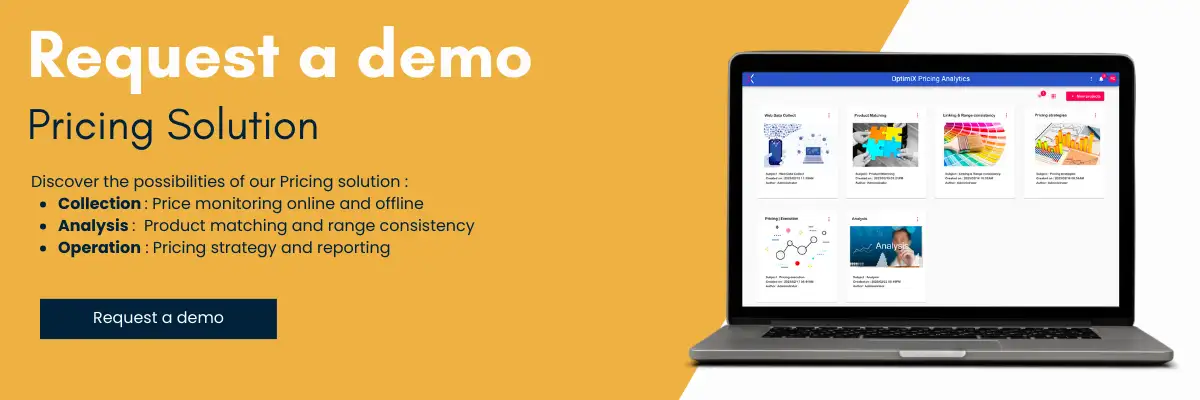In a world increasingly aware of environmental challenges, companies are increasingly turning to sustainable business practices. Eco-responsible “pricing” is emerging as an innovative solution to reconcile economic profitability and respect for the environment.
In this article, we’ll explore the fundamentals of eco-friendly pricing, its benefits for businesses, and how to effectively integrate it into your business strategy.
The objective is to deepen the understanding of eco-responsible “pricing” by highlighting its fundamental principles, its advantages for businesses and effective methods for its integration into commercial strategies.
By closely examining the ins and outs of this innovative approach, we aim to provide readers with the tools and knowledge necessary to adopt and implement eco-responsible pricing effectively and relevantly in their professional context.
Price development: eco-responsibility at the heart of profitability
Eco-responsible “pricing” is based on the fundamental principle that the prices of products and services should reflect not only the costs of production and distribution, but also the environmental impacts associated with their manufacture, use and disposal. This involves an in-depth analysis of the entire product lifecycle, from raw material extraction to waste management, to quantify and incorporate these environmental costs into pricing.
Eco-responsible “pricing” is a strategic approach that integrates environmental considerations in setting prices for products or services. Unlike traditional methods which focus solely on financial profitability, eco-responsible pricing takes into account the ecological impact throughout the product life cycle, from its conception to its end of life. This approach aims to internalize environmental costs and promote more sustainable behavior among consumers.

Constant market evolution and growing expectations for sustainability add a new and crucial dimension to this delicate balance. The advent of an eco-responsible pricing method represents not only an innovative response, but also a necessary specialization to navigate this changing landscape.
The ability to understand market dynamics, anticipate consumer trends and integrate environmental imperatives into pricing becomes a major competitive advantage.
Additionally, this specialization aligns perfectly with the transformation of purchasing behaviors. Modern consumers, increasingly aware of their impact, actively favor sustainable products and services. For businesses, remaining competitive means adjusting their pricing strategies by adopting specialized values such as transparency, accountability and sustainability.
The Global Sustainability Study 2021 confirms this reality, placing sustainability among the five main factors influencing consumer choices.
It is essential to recognize that pricing is no longer just a matter of numbers, but an integral component of a company’s overall strategy. The ability to effectively merge financial, ethical and environmental considerations into pricing is the key differentiator.
Advantages of eco-responsible "pricing":
Economic benefits: Cost reduction, market differentiation
Adopting an eco-responsible “pricing” approach can offer many economic advantages to businesses. By identifying and reducing environmental inefficiencies throughout the value chain, businesses can achieve significant cost savings, including reducing resource consumption and minimizing waste. Additionally, eco-friendly “pricing” can be a powerful market differentiation tool, allowing companies to stand out from the competition by highlighting their commitment to sustainability and responding to growing consumer demand for environmentally friendly products and services.
Environmental impact: Reduction of carbon footprint, conservation of resources
In addition to the economic benefits, eco-responsible pricing also helps to mitigate the environmental impact of commercial activities. By integrating environmental costs into pricing, businesses are incentivized to adopt more sustainable practices, such as using recycled materials, reducing energy consumption and minimizing greenhouse gas emissions. Therefore, eco-responsible “pricing” plays a crucial role in reducing the carbon footprint and preserving natural resources, thus contributing to the fight against climate change and environmental degradation.
Brand image and loyalty: Attracting environmentally conscious customers
Finally, eco-responsible pricing can strengthen a company’s brand image and promote customer loyalty. By demonstrating an authentic commitment to sustainability through transparent and fair pricing practices, businesses can earn the trust and loyalty of environmentally conscious consumers. Additionally, by offering eco-friendly products and services at competitive prices, companies can expand their customer base and reach new market segments, opening up new opportunities for growth and business development.

Pricing strategy: rationalization, eco-responsible commitment and adaptability
Eco-responsible pricing is guided by several key principles. Transparency is essential to inform consumers of the environmental costs associated with their purchases, allowing them to make informed decisions. Equity ensures that these costs are distributed fairly among different stakeholders in the value chain. Finally, eco-responsible pricing aims to encourage sustainable behavior by offering economic incentives to reduce environmental impact, for example by offering reduced prices for recycled products or by encouraging the use of energy sources. renewable energy.
In implementing the pricing strategy focused on rationalization, each pricing decision is meticulously crafted, with the primary goal of simplifying and optimizing the process surrounding the core value of the products. This approach is not limited to a simple economic consideration, as it also integrates social and environmental responsibility into every aspect of pricing decisions. Each “committed price” thus becomes the tangible reflection of a deep commitment to sustainability, positioning the company as a responsible actor within its ecosystem.
The second pillar, eco-responsible commitment, transcends the simple economic dimension. Each pricing decision is part of a holistic vision that actively integrates ethical and environmental considerations into the decision-making process. This deliberate approach aims to create harmony between economic performance and sustainability imperatives, placing the company on the path to enlightened social and environmental responsibility.
Finally, adaptability constitutes the third essential pillar of this strategy. Faced with a constantly evolving market, the company integrates flexibility and agility into every aspect of its pricing. The “Test and Learn” method, combined with the judicious use of advanced technologies, demonstrates the constant desire to anticipate changes and respond agilely to the dynamics of the business landscape. This ability to adapt ensures that the pricing strategy remains relevant, aligned with market trends and in tune with changing consumer expectations, creating a dynamic, scalable and resilient approach.
Conclusion
Eco-responsible “pricing” represents much more than a simple commercial strategy; it is a real transformation opportunity for businesses and society as a whole. By aligning prices with environmental values, this approach makes it possible to reconcile economic profitability and ecological responsibility, paving the way for a more sustainable and equitable development model.
By summarizing the key points of this article, we explored the foundations of eco-responsible “pricing”, its economic and environmental benefits, as well as effective strategies for its integration into business practices. From transparency to fairness to incentivizing sustainability, the guiding principles of eco-responsible “pricing” provide a solid framework to guide businesses towards a greener and more prosperous future.
As environmental challenges continue to grow, it is more important than ever for businesses to adopt responsible and sustainable business practices. Eco-responsible pricing offers a promising way to address these challenges while creating long-term value for businesses, consumers and the planet.
The constant evolution of commerce requires a refined strategic vision in terms of pricing, with a distinct orientation towards an eco-responsible approach. This transition is part of a reality where companies are faced with multiple challenges, ranging from environmental issues to health and economic considerations.
The advent of an eco-responsible pricing method represents an innovative and necessary response to these contemporary challenges. This distinctive approach goes beyond conventional practices, emphasizing specialized expertise that integrates the imperatives of social and environmental responsibility.


